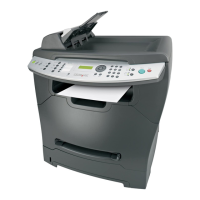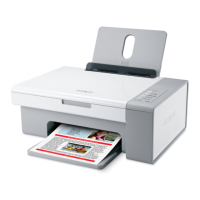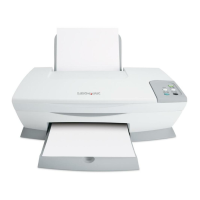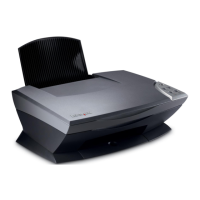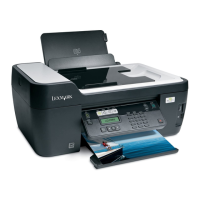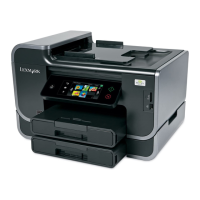Glossary
Adhesive contamination Migration of adhesive away from a label, which can cause printer contamination.
Also known as glue contamination.
Anvil cuts Cuts that penetrate both the face stock and the liner of a label.
Auto compensator A gear‑driven pick arm suspended by a counterbalance spring that allows the
printer to automatically adjust the pick force necessary for different types of print
materials.
Back splits Also known as back slits or liner cuts. Cuts through the backside of the liner. Back
slits increase the potential for adhesive contamination.
Backup roll contamination Toner contamination of the fuser's backup roll. Particularly applies to vinyl,
plastic, and paper labels. Slick backings are harder to feed and increase toner
buildup in the fuser.
Basis weight Weight in pounds of a specific number of sheets of paper or stock in a standard
size for that particular material.
Beam strength Also known as column strength. Refers to how well the material is able to support
itself and remain flat and straight during the printing process.
Butt cut Cut flush to one another, with no extra area between. This cut does not extend
through the liner. Butt cut labels may or may not have an edge matrix removed.
Calendering The process of moving paper through metal rolls during manufacturing to smooth
and gloss the surface of the paper.
Clipping Also known as buckler damage. A notching or slight folding of the corner of the
stock placed under the corner buckler of the paper tray.
Conversion The process that turns base stock into cut‑sheet products designed for specific
applications. Conversion includes cutting the base stock to size, perforating the
stock, die‑cutting, and applying inks and topcoats.
Converters Print material suppliers who take the base stock from the manufacturer and
convert it into cut sheet products.
Corner buckler The metal tab at the corner of a paper tray that helps the printer separate one
sheet of paper from the stack during the pick process.
Curl Waviness or curvature at the edge of the material that is generally moisture
related.
Cut sheet Single piece (page) of paper or label stock.
Debossing Process of pressing an image down into the surface of the label or card stock. See
“Embossing” on page 175.
Delamination The peeling of labels off the backing during the printing process.
Die‑cut Labels: Cut of material (face stock) to form individual labels on sheet. Cuts do not
penetrate the liner. Card Stock: Cuts made with dies to create the shapes wanted
in the stock. Cuts may or may not go completely through the stock. See “Ties” on
page 176.
Glossary 174
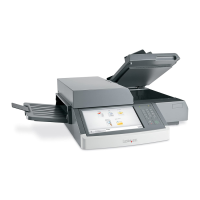
